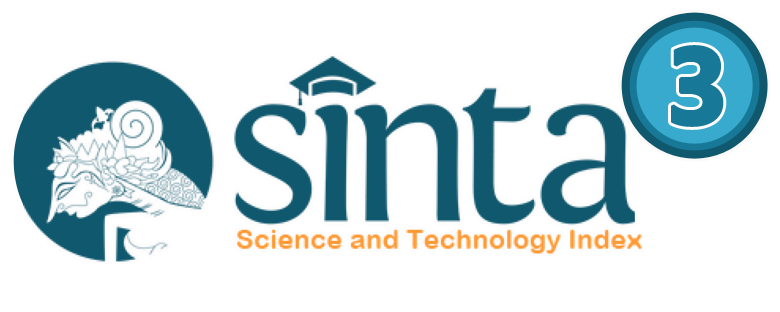Usulan Time-Driven Activity Based Costing System, Customer Profitability Analysis dan Sistem Pengendalian Internal pada Perusahaan Logistik
DOI:
https://doi.org/10.35838/jrap.2021.008.01.01Keywords:
TDABC, Customer Profitability Analysis, Internal Control System, Logistics ServiceAbstract
ABSTRACT
This research aims to answer the problem arising in PTX, a logistic services company, that never achieved target profit over five past years. This study is conducted using a case study with a qualitative research method. The data are analysed using descriptive analysis and content analysis techniques based on performance theory. Results shows that PT X cannot achieve target profit due to inaccurate allocation of product cost and inaccurate price setting. To improve product cost and price setting accuracy, this research recommends PT X to conduct Customer Profitability Analysis, apply Time-Driven Activity Based Costing to cost allocation and apply internal control system.
ABSTRAK
Penelitian ini bertujuan untuk menjawab permasalahan yang terjadi di PT X yang bergerak di industri jasa logistik. PT X belum pernah mencapai target laba sejak lima tahun terakhir. Strategi penelitian yang digunakan adalah studi kasus dengan metode penelitian kualitatif. Penelitian ini menggunakan teknik analisis data yaitu descriptive analysis dan content analysis berdasarkan performance theory. Hasil penelitian ini menunjukkan bahwa PT X tidak dapat mencapai target laba dikarenakan adanya alokasi biaya yang tidak memperhitungkan biaya tidak langsung dan penentuan tarif yang tidak didasarkan oleh perhitungan harga pokok penjualan. Untuk keakuratan alokasi biaya dan penentuan tarif, penelitian ini memberikan usulan pada PT X untuk melakukan Customer Profitability Analysis, menggunakan Time-Driven Activity Based Costing untuk alokasi biaya serta menerapkan sistem pengendalian internal.
Downloads
References
Anderson, D., & Eubanks, G. (2017). Leveraging COSO across the three lines of defense. The Institute of the Internal Auditors.
Badan Pusat Statistik Indonesia. (2020). Berita Resmi Statistik 5 Mei 2020.
COSO. (2013). Internal Control - Integrated Framework 2013, (May).
Dalci, I. (2010). Customer profitability analysis with time-driven activity-based costing : a case study in a hotel, 22(5), 609–637. https://doi.org/10.1108/09596111011053774
Everaert, P., Bruggeman, W., & Anderson, S. R. (2008). Cost Modeling in Logistics Using Time-driven ABC : Experiences Cost modeling in logistics using time-driven ABC Experiences from a wholesaler, (April). https://doi.org/10.1108/09600030810866977
Griful-miquela, C. (2001). Activity-Based Costing Methodology for Third-Party Logistics Companies, 133–146.
Hansen, D., & Mowen, M. (2015). Cornerstone of Cost Management. Cengage learning.
Katadata.co.id. (2019). Prospeknya Cerah, Bisnis Logistik Diprediksi Tumbuh Lebih 30% di 2020. Retrieved from https://katadata.co.id/berita/2019/07/12/prospeknya-cerah-bisnis-logistik-diprediksi-tumbuh-lebih-30-di-2020
Kompas.com. (2019). Perusahaan Asing Mendominasi Industri Logistik di Indonesia. Retrieved from https://properti.kompas.com/read/2019/04/16/213000221/perusahaan-asing-mendominasi-industri-logistik-di-indonesia?page=all
Langley Jr, C., Belman, D., & White III, C. (2018). Logistics service providers. Trucking in the Age of Information.
Potter, P., & Toburen, M. (2016). The 3 Lines of Defense for Risk Management, 63(5).
Samudranesia.id. (2020). Ini Review Sektor Logistik 2019 dan Prediksi 2020 Menurut ALFI. Retrieved from http://samudranesia.id/ini-review-sektor-logistik-2019-dan-prediksi-2020-menurut-alfi/
Somapa, S., & Cools, M. (2012). International Journal of Logistics Research and Applications : A Leading Journal of Supply Chain Management Unlocking the potential of time-driven activity-based costing for small logistics companies, (October 2014), 37–41. https://doi.org/10.1080/13675567.2012.742043
Sonnentag, S., & Frese, M. (2002). Chapter 1 Performance Concepts, (October 2017). https://doi.org/10.1002/0470013419.ch1
The World Bank. (2018). Logistics Performance Index 2018. Retrieved from https://lpi.worldbank.org/international/global
Downloads
Published
Issue
Section
License
Authors who publish with this journal agree to the following terms:
- Authors retain copyright and grant the journal right of first publication with the work simultaneously licensed under a Creative Commons Attribution-ShareAlike 4.0 International License that allows others to share the work with an acknowledgement of the works authorship and initial publication in this journal.
- Authors are able to enter into separate, additional contractual arrangements for the non-exclusive distribution of the journals published version of the work (e.g., post it to an institutional repository or publish it in a book), with an acknowledgement of its initial publication in this journal.
- Authors are permitted and encouraged to post their work online (e.g., in institutional repositories or on their website) prior to and during the submission process, as it can lead to productive exchanges, as well as earlier and greater citation of published work (See The Effect of Open Access).














